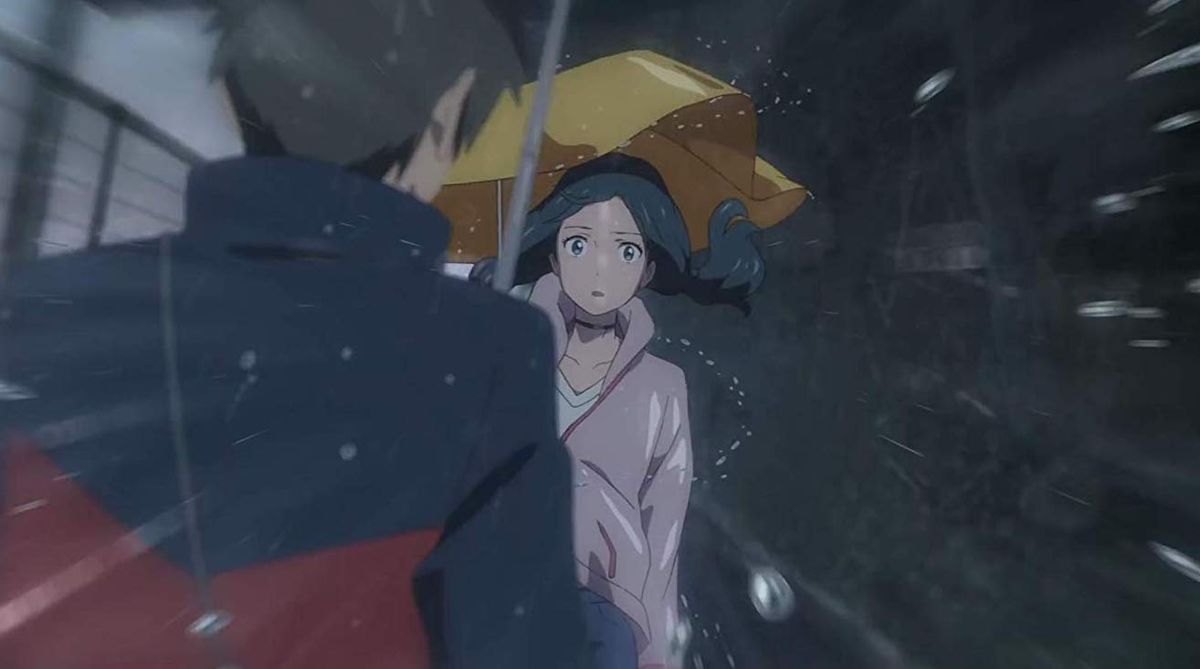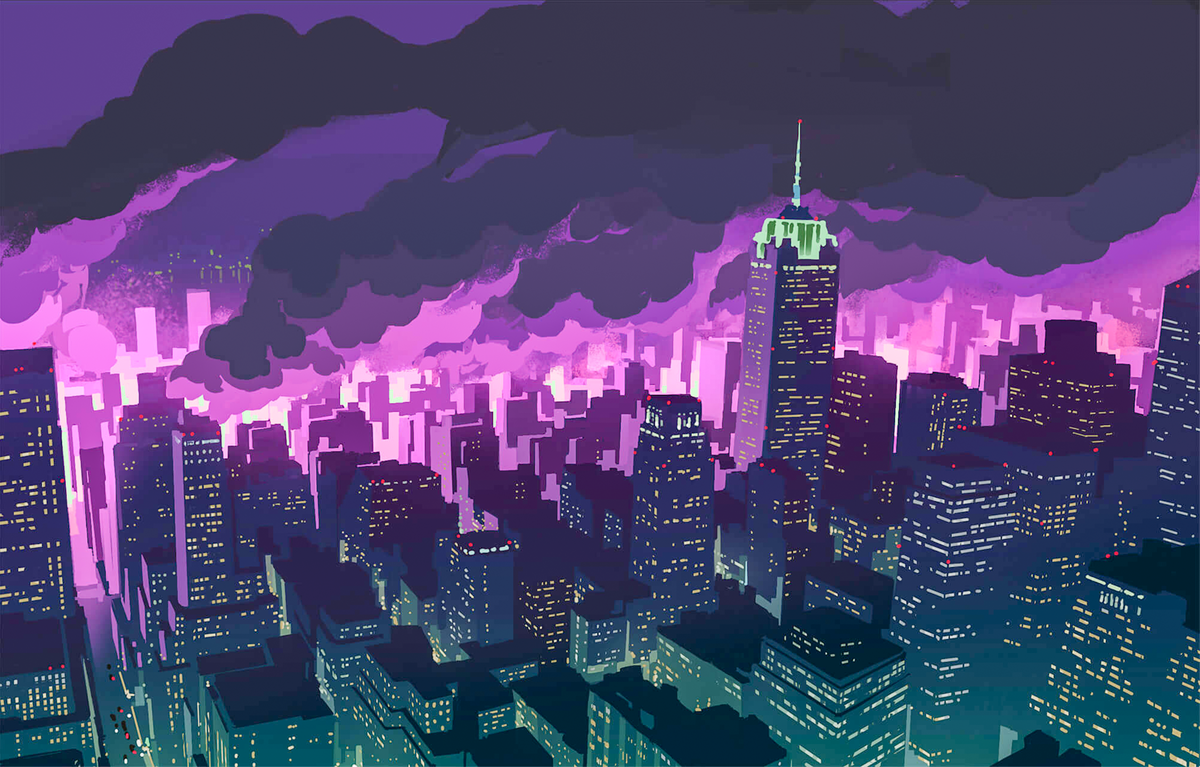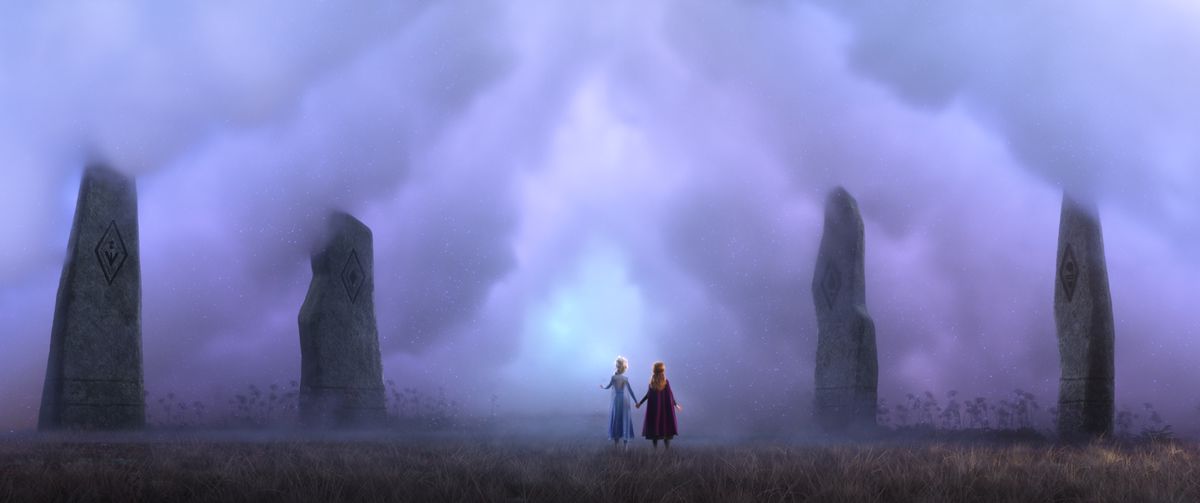The centerpiece of Makoto Shinkai Getting old with you It is a perpetual and relentless rain that hits the city of Tokyo. From an early sequence in which the protagonist Hodaka is almost dragged from the deck of a boat through a layer of rain to a snowstorm in the middle of summer, it is clear that something is very bad with the weather. Desperate for a break in the storm, city residents are willing to do anything for a little sunlight. In the midst of a climate crisis, that means even paying a teenage girl, the cheerful “girl of the sun” Hina, whose prayers may wish it doesn’t rain, to provoke the strange moment of clear skies.
The film, which premiered last summer in Japan and is currently in American theaters, joins the ranks of several recent animated films that are concerned about climate change. While Getting old with you It is a bit of a fact, since it is obsessed with the weather itself, two other recent releases are also based on today’s climate anxiety: Studio Trigger & # 39; s Promareand from Disney Frozen II. The three films focus on climate change and anxiety in a nuanced way, but all do so by embodying a variety of weather-related phenomena that are hitting humanity again. In Getting old with you, is the indomitable rain. In Promare, are sensitive llamas. In Frozen II, are hostile and elementary spirits in an enchanted forest. Other recent anime movies like Studio 4C Children of the sea and Masaaki Yuasa Ride your wave, which have not yet been launched in the United States, also deepen the elementary anguish.
The idea of vindictive nature is not particularly new, especially in the field of Japanese animation. The films of Studio Ghibli Princess Mononoke (1997) and Nausicaä of the Valley of the Wind (1984) focused particularly on adverse relationships between exploitative humans and hostile forests and animals. However, the most recent films feel like a symptom of the current moment, in which younger generations are forced to deal with the actions of both corporations and the largely apathetic elders who will not be responsible for their impact on the planet.

And in Frozen II, PromareY Getting old with you, young protagonists eventually differ control of nature itself, resulting in catastrophic consequences that permanently change humanity’s relationship with the natural world.
(Ed. Note: main spoilers of Messing with you, Promare, Y Frozen II ahead.)
Getting old with you It has the clearest weather accessories of the three. The premise of the film is relatively simple: in a Tokyo where the rain rarely stops, the runaway teenager Hodaka associates with Hina, turning her gift to break the clouds into a thriving business. It has a price: like the last in a line of tragic “weather maidens,” Hina must eventually be sacrificed to return the sun forever.
While the animation of the film is impressive, from the first moment it is clear that MeteorizationRain is not natural both in its persistence and in its nature. In the most magical sequences of the film, it takes the form of twisting fish and monstrous dragon-like figures, moving from a playful sequence to a menacing one. Tokyo’s climate crisis is supernatural in nature, but the responsibility for resolving it lies unfairly with a single young woman.
Frozen II ’The narrative works in a similar way, forcing the royal sisters Elsa and Anna to atone for the crimes of their ancestors against nature and a group of people called Northuldra, who live in an enchanted forest. After his grandfather, the king of Arendelle, built a dam in the territory of Northuldra, a conflict broke out between the two civilizations, which caused the natural spirits to go crazy and seal the forest.
Until a certain point, Promare It raises a similar conflict. In a world where the Burnish, a group of mutant humans with the power to handle supernatural fire, are used as test subjects, the Earth’s core magma threatens to boil and consume the surface. The main villain of the film, a politician framed as the savior of humanity, treats magma as an inevitable threat. Instead of working to fix it, he builds an ark with the ability to save only 10,000 elected elites, and empowers it with the Burnish themselves. After the protagonists of the film, a powerful Burnish and a novice firefighter, learn that magma activity is linked to the pain of Burnish, they are forced to solve a humanitarian and climate crisis at once.

Each of these disasters is emotionally crude and personal, and plays with the feelings of a generation of young people facing irresoluble climate anxiety. A 2019 Amnesty International survey that questioned 10,000 young people between 18 and 25 in 22 different countries found that climate change was the most widespread fear among young people. Even with young activists like Greta Thunberg leading the unfortunately necessary burden, climate change movements are accompanied by a feeling of helplessness and lack of confidence in individual action. For young people who will be close to feel the consequences of a warmer land in 2050 and beyond, the imminent reality of climate change is terrifying and numbing at the same time.
Animation offers a cathartic solution, staging weather disasters in fantastic terms, while inserting elements of our current reality. Frozen II It tries to turn the colonialist exploitation of indigenous peoples and the environment into a rate for children, with mediocre success. It focuses on a younger generation that tries to atone for the crimes of their ancestors and restore natural balance. Certainly not a jump read Promare about the emergence of fascism in the midst of a climate crisis, as its protagonists vindictively overthrow the ruling class that prefers to escape from problems, instead of solving them.
In the most climatic moments of these films, the responsibility lies solely with the young people who have to sacrifice what they like to fix things. In Promare, the dual protagonists Galo and Lio guide a wave of benevolent alien flames across the Earth, putting out their fires and leaving the Burnish deprived of their powers. In Frozen II, Princess Anna decides to destroy the transgressive prey, even though she runs the risk of destroying her own kingdom in the process.
Getting old with you He finally says more about the current moment, channeling a generation that never asked to be responsible for saving the world. As the characters reconstruct the “climate maiden” legend, Hina’s life is initially framed as a necessary and inevitable price to pay for normalcy. “If you could fix this crazy climate with a human sacrifice, I would be happy. Everyone would do it,” says Hodaka’s mentor, Suga, even knowing that Hina’s apparent powers mean that the legends he is quoting are true, and he is not speaking in an abstract way.

In the end, however, Hodaka prioritizes Hina over everyone else, choosing to save her even though she knows she is condemning Tokyo to disappear under perpetual rain floods. Your current reality and happiness have priority. “I love you more than any blue sky,” Hodaka tells Hina as they fall jubilantly through the clouds. “The weather can stay crazy.”
As a result, Tokyo is increasingly flooded with water. Ferries replace subway lines. Suga moves from an underground office to a narrow space in a skyscraper. An old client leaves his home after the neighborhood is submerged. When Hodaka visits that particular woman three years after it starts raining and never stops, she provides a pearl of wisdom: “In the old days, Tokyo was just a bay. Humans and the weather changed it, little by little. So, well … I think he just returned to his original state. “
In general, in these animated films, nature win. Cathartic and apocalyptic heights are allowed before a new normal is established. While these movies talk about the power of young generations to make decisions about the future, they also talk about the fact that we never wanted this in the first place. Very soon, cataclysmic floods and raging hells will be more than just animated visual candy; in fact, between events such as the catastrophic monsoon floods in Bangladesh and the continuing Australian forest fires, they are already part of our current reality.


